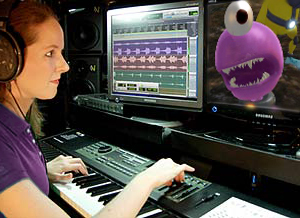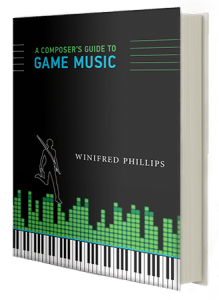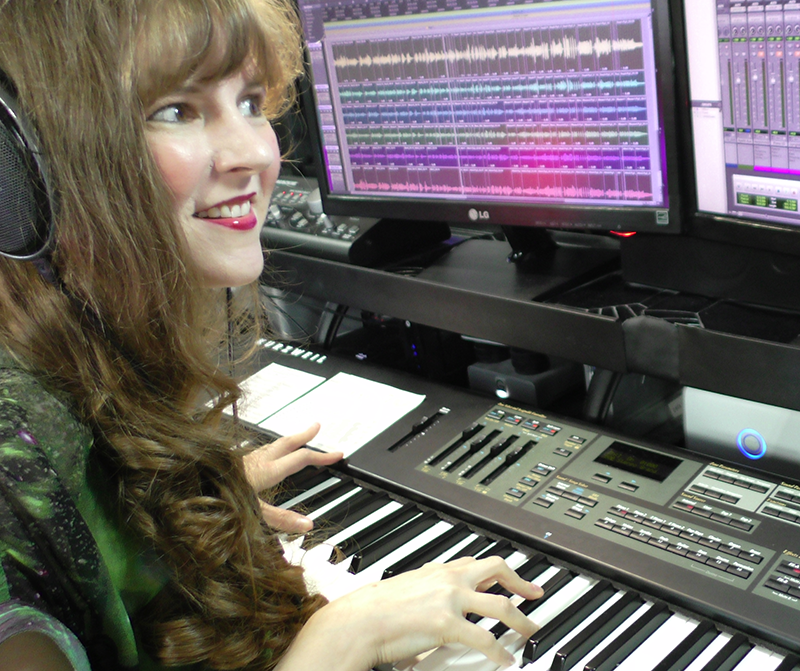Trending
Opinion: How will Project 2025 impact game developers?
The Heritage Foundation's manifesto for the possible next administration could do great harm to many, including large portions of the game development community.

Featured Blog | This community-written post highlights the best of what the game industry has to offer. Read more like it on the Game Developer Blogs or learn how to Submit Your Own Blog Post
Video game music composer Winifred Phillips breaks down the popular vertical layering interactive music technique, with music examples and a video tutorial showcasing techniques from one of her game projects (The Maw video game from Twisted Pixel).

 Welcome to the third installment of my four-part article series on the core principles of music interactivity, including video demonstrations and supplementary supporting materials that take these abstract concepts and make them more concrete. In Part One of this series, we took a look at a simple example demonstrating the Horizontal Re-Sequencing model of musical interactivity, as it was used in the music I composed for the Speed Racer Videogame from Warner Bros. Interactive. Part Two of this series looked at the more complex Horizontal Re-sequencing music system of the Spore Hero game from Electronic Arts. So now let's move on to another major music interactivity model used by video game composers - Vertical Layering.
Welcome to the third installment of my four-part article series on the core principles of music interactivity, including video demonstrations and supplementary supporting materials that take these abstract concepts and make them more concrete. In Part One of this series, we took a look at a simple example demonstrating the Horizontal Re-Sequencing model of musical interactivity, as it was used in the music I composed for the Speed Racer Videogame from Warner Bros. Interactive. Part Two of this series looked at the more complex Horizontal Re-sequencing music system of the Spore Hero game from Electronic Arts. So now let's move on to another major music interactivity model used by video game composers - Vertical Layering.
Our discussion of Vertical Layering will focus on its use in one of my projects: The Maw video game (developed by Twisted Pixel Games). We've discussed the vertical layering music model in previous articles, but aspiring video game music composers who haven't encountered the term "vertical layering" before may need some clarification before we proceed. In my book, A Composer's Guide to Game Music, I began the exploration of the vertical layering technique with the following description:
 "In interactive music, vertical layering involves the playing of multiple independent audio files simultaneously within the game's audio engine, which stacks these layers on top of one another in perfect synchronization. Interactivity is achieved through the independent manipulation of the layers, enabling the overall track to change in accordance with the fluctuating state of the game."
"In interactive music, vertical layering involves the playing of multiple independent audio files simultaneously within the game's audio engine, which stacks these layers on top of one another in perfect synchronization. Interactivity is achieved through the independent manipulation of the layers, enabling the overall track to change in accordance with the fluctuating state of the game."
This concept may seem very complex - observing the technique in action may be the best way for us to fully understand it. In the video embedded below, I demonstrated how vertical layering works by showing the individual music files from The Maw video game within the famous and ubiquitous Pro Tools DAW application.
 In the video, the main character of The Maw game is described as "a one-eyed purple alien that's essentially a giant mouth - hence its name, Maw." With a main character who exhibits such awesome absurdity, it becomes important for the music of The Maw video game to be equally absurd. However, the most interesting aspect of this music is the way in which it is structured, as the video describes:
In the video, the main character of The Maw game is described as "a one-eyed purple alien that's essentially a giant mouth - hence its name, Maw." With a main character who exhibits such awesome absurdity, it becomes important for the music of The Maw video game to be equally absurd. However, the most interesting aspect of this music is the way in which it is structured, as the video describes:
"Since the track was written using a three layer approach for music interactivity, each single layer needed to stand alone and also work with any of the others, so flexibility was key... Since this is a fairly simple vertical layering structure, we only have three layers. In the game, the three layers serve specific purposes."
The video demonstrates how these three layers were structured so that they would suit the in-game action, from general exploration to comedic events to special activities such as flying. While the musical content of each layer is unique, it is also complementary when the layers are combined. "While each layer can function alone," the video explains, "they're intended to work together."
While these concepts can sound a bit confusing, things become much clearer when we can hear and see the music as it plays. Let's take a look at the video and see vertical layering in action:
I hope the video clarified the vertical layering construct and made it easier to understand! As a further example, let's listen to another complete track from The Maw, and then see how it works within the game itself. Here's a streaming SoundCloud version of the "Yum Munching" track from The Maw game:
Now let's see how "Yum Munching" works during gameplay (music starts at 0:25):
In the next article, we'll explore a more ambitious execution of the vertical layering model, as it was implemented in the popular LittleBigPlanet 2: Toy Story game. In the meantime, please leave any questions or thoughts in the comments section below!
 Winifred Phillips is an award-winning video game music composer whose most recent project is the triple-A first person shooter Homefront: The Revolution. Her credits include five of the most famous and popular franchises in video gaming: Assassin’s Creed, LittleBigPlanet, Total War, God of War, and The Sims. She is the author of the award-winning bestseller A COMPOSER'S GUIDE TO GAME MUSIC, published by the Massachusetts Institute of Technology Press. As a VR game music expert, she writes frequently on the future of music in virtual reality video games.
Winifred Phillips is an award-winning video game music composer whose most recent project is the triple-A first person shooter Homefront: The Revolution. Her credits include five of the most famous and popular franchises in video gaming: Assassin’s Creed, LittleBigPlanet, Total War, God of War, and The Sims. She is the author of the award-winning bestseller A COMPOSER'S GUIDE TO GAME MUSIC, published by the Massachusetts Institute of Technology Press. As a VR game music expert, she writes frequently on the future of music in virtual reality video games.
Follow her on Twitter @winphillips.
Read more about:
Featured BlogsYou May Also Like